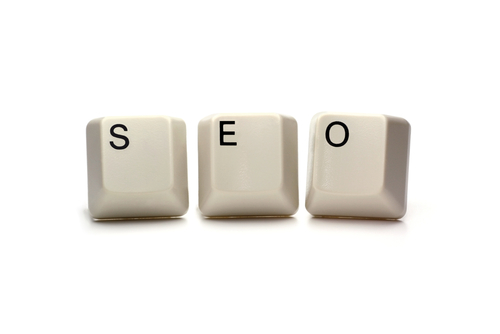
Build Personal Brand Online: 5 SEO Don’ts
For the most part, when you start to create your website, your SEO strategy should be very straightforward. You want to make sure you are doing basic things, such as using your full name as you want people to search for it. You should also ensure you’re building a strong link network between your site and other places where you exist online. If you’re looking for professional guidance to optimize these efforts, you might want to visit affordable seo melbourne for expert advice and cost-effective solutions.
But there are a few things that you should be weary of that could get you into some serious Google trouble. You can ask help from an expert like Damon Burton for some great advice!
Check below for some of them but if you want to get help from an expert, check the SEO Agencies Brisbane website at the link.
This list contains the 5 Don’ts of building a website:
- Key word stuffing– When a search engine crawls your website it looks to see what words are used often because that is how it understands the page’s topic. You can over use words on the page. Google looks at how many words are on the page and then looks at the density of certain words. If you put your name in a paragraph 5 times, search engines will get suspicious and not rank you as highly.
- Another note on keyword stuffing– It used to be an SEO tactic to put keywords at the bottom of a page in the same color as the background. This way users did not have to see the words but the content would still be there when a search engine crawled the site. Google wised up to this years ago and specifically looks to make sure that the content is a different color than the background and that users can see it.
- Duplicate content– If a search engine reads the same content twice it will assume that the content is not original and that the site is not correctly managed. You should spend some serious time when you are writing your site’s content. You want to ensure that it conveys the correct message.
- Too many links– Every link that you have going from your site to another site takes away from your rank. You have to make sure that you are liking to good websites and that you limit the number of links that you have to the minimum. But on the same not you want to make sure that you have a good link structure between your site and the rest of your profiles.
- All images, no content– Images mean little to search engines. You should aim to have 250-500 words per page so that search engines can read the content. Make sure that when you do have image, you have content around them.
There are many black hat SEO tactics that people sometimes use on the web. When you are just starting off I would suggest that you create your site, create some good content and then start to tweak it. Remember that the SEO process will take a couple months before you start noticing results.

This is why SEO can drive a man to drink..lol
You do to little, no good. You do to much..no good.
You have to find that middle ground with all the SEO tactics. I'm still looking 🙂
As a SEO, I have to point to a couple things wrong with the post;
Paraphrased from Matt Cutts – It isn't that Google thinks duplicate content is merely spam, but, Google, for the most part, can tell when the content was put up on the web. So, if your website posts an article and another website scrapes the content and puts it up, you're website will most likely get the higher ranking because it was on the net first. —- It's not always the case that you are spamming and filling your content with duplicate content, there are some legit reasons to have duplicate content on your site.
Too many links – This is just wrong, sort of. What's the definition of too many links? I can have a website with 5000 links point to external websites and it won't harm its rankings a bit. Also, you specifically say 'rankings' which is too general, it doesn't have much of a meaning; what rankings? which rankings? for what phrases? “Too Many” links will not hurt you, if they are links with purpose. Linking to spam identified sites and neighborhoods will hurt you. But that doesn't mean too many links will hurt you, 1 link can hurt you.
All Images, No Content – Again, wrong reasoning. Images do help your SEO, Search Engines CAN read your images, through their ALT tag. Great content with 100 images won't hurt your SEO. 100 images that makes your page slow to load will hurt your SEO, but for a lot of different reasons.
SEO is a complicated topic, but I don't want generalizations to taint the minds of those looking towards SEO and see things like this, it's more complicated than the above, more working pieces.
SEO can be extremely rewarding, don't bang your head vvv little tweaks can have a big impact.
Ray – Thanks for your comment. We appreciate people getting involved and would love to hear more from our readership.
Concerning duplicate content I agree that porting news from another site may have some good implications but on a personal website where individuals are producing content about themselves I am encouraging them to produce original content across a limited number of sites.
Once again on the link comment, I am sure that a site with a better page rank having links will not hurt you as much. To reference Matt Cutts in his June 15 article on page rank sculpting, outbound links play a role in determining PageRank. Having 5000 outbound links is a really relative number. If you have 10,000 pages with 5,000 total links and all of them have rel=nofollow then your outbound linking isn’t affecting you. As Matt Cutts states “Nofollow links definitely don’t pass PageRank.” You risk of passing along page rank as Matt Cutts also states, “Google trusts sites less when they link to spammy sites or bad neighborhoods” so when you do link you want to make sure it is a good deliberate link.
Search engines cannot read images very well as stated in Matt Cutt’s video: http://www.youtube.com/watch?v=3NbuDpB_BTc but they can read very well what is around an image. Google does not look at the image and do optical recognition of the image. Instead it does contextual reasoning to determine the nature of the image. Of course Google looks at alt tags, titles, file names, text around the image. Once again I geared the article towards a person building a site for the first time. You are correct in stating that Google is weary of load times. For an individual that is creating a website for their first time, I am encouraging them to go lighter on the images because after years of watching how people build sites for their first time, they are not sophisticated in the ways of making sure they are optimized for the web, they have the correct supporting code in the way of alt tags, title tags and good file names. As I stated in the above item concerning all images, no content that a person should have text around their images. Once again someone just starting out is most likely not going to have all of the components needed to make an all image page search engine friendly.
I agree completely that SEO is very complex, search engines are constantly on a quest to differentiate between good content and content that will not help their users. You hallways have to keep in mind that search engines are businesses, and their customers are people that search every day.
With regard to links, doesn't google also recognize “hub and spoke” type websites, those which actually link out constantly but provide a secure hub for people to find quality content elsewhere. I'm picturing sites like Alltop etc. I don't really have the time to quote relevant articles right now, but I'm sure such a thing exists.
With regard to links, doesn't google also recognize “hub and spoke” type websites, those which actually link out constantly but provide a secure hub for people to find quality content elsewhere. I'm picturing sites like Alltop etc. I don't really have the time to quote relevant articles right now, but I'm sure such a thing exists.
Too many links won't harm your website. The only thing these links harm your website if you posted your link on spammed blogs or bad community sites.
Too many links won't harm your website. The only thing these links harm your website if you posted your link on spammed blogs or bad community sites.
Nice list! I'll always remember not to commit these mistakes. Thanks for sharing.